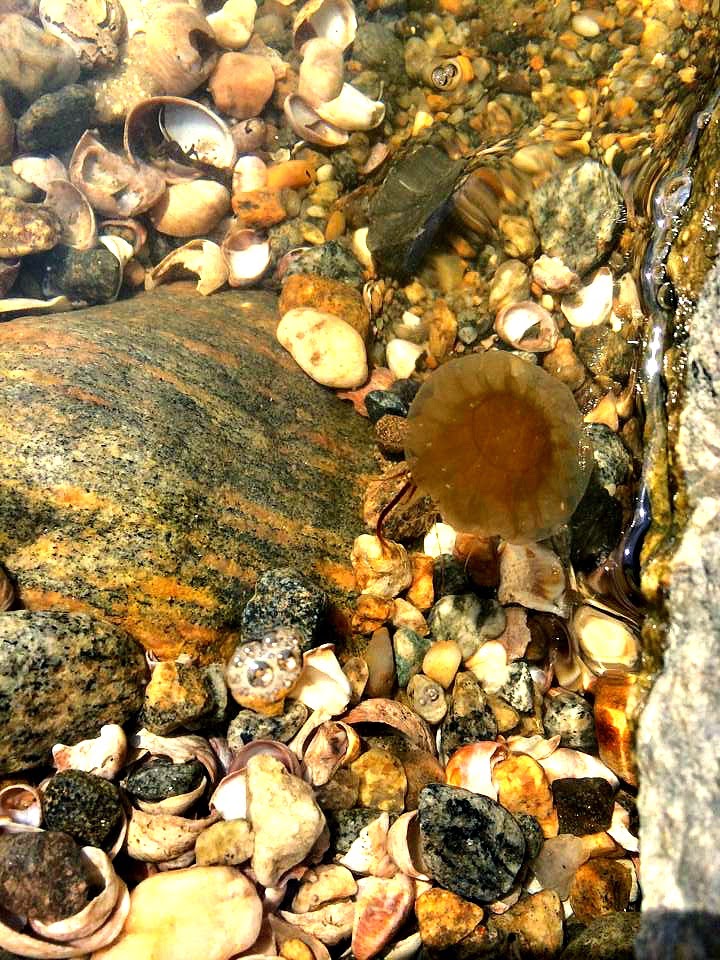I can almost hear the collective “HUH?”…..
Frasier and I took a hike along Hammonassets rocky waterfront trails this morning and when we came to where we like to dip our feet in the water, well…. we didn’t. Just as I kicked off my sneaks and stepped into the chilly ocean water I spotted them. Hundreds of what I thought were man o’war jellyfish. Come to find out later after posting on FB, they are actually Lions Mane Jellies. For all these years whenever I spotted one of these, I pretty much yiped and got out of the water. Turns out they are not deadly. Their sting might be annoying, but it’s a mild irritation. I’ve read some conflicting info on the Lions Mane jellies though… Supposedily originating in the deep arctic oceans, they can reach huge sizes, like 40 lbs. and 7 feet long, I kid you not. These are very small in comparison. Some the size of a dessert plate, others like a silver dollar.
Beautiful, aren’t they?
Some jellyfish facts:
* Jellies are ancient animals, having roamed the seas
for at least 500 million years
* Jellies don’t have brains as we typically think of them: rather, they have a network of neurons (“nerve net”) that allows jellies to sense their environments, such as changes in water chemistry indicating food or the touch of another animal. The nerve net has some specialized structures such as statocysts, which are balance sensors that help jellies know whether they are facing up or down, and light-sensing organs called ocelli, which can sense the presence and absence of light.
* Jellies are found in oceans worldwide, in shallow and deep water, and a few can even be found living in freshwater.
* Jellyfish are carnivorous, and will eat just about anything they run into! Most jellies primarily eat plankton, tiny organisms that drift along in the water, although larger ones may also eat crustaceans, fish and even other jellyfish .
* Humans eat jellyfish: people have fished for jellies for at least 1700 years off the coast of China.
* Many jellyfish are able to produce light—an ability known as bioluminescence. They have proteins in some tissues that undergo a chemical reaction to produce blue or green light in response to stimuli such as touch. No one’s quite sure why jellies bioluminesce, but it seems to be mainly a defense tactic. A bright enough flash could be enough to startle a predator—or to attract an even bigger predator to make the jelly’s predator into prey.
I had the lovely experience of getting stung by the long tentacles of a clear jelly fish that had been lying on the beach in Panama City, Florida years ago. OUCH! The only relief? … soaking my foot in meat tenderizer mixed with Vinegar. So there’s your remedy in case you ever find yourself afflicted with a jellyfish sting. It works!



